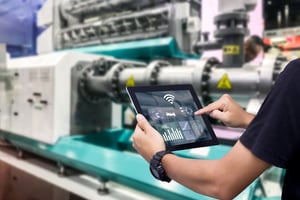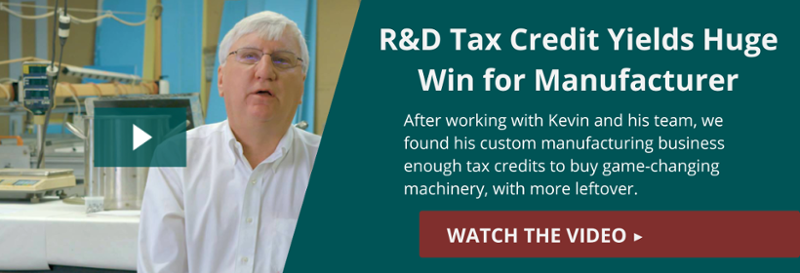
All manufacturing companies are automated to one degree or another. However, taking automation to the next level can be a huge asset for manufacturers. With it, tedious or time-intensive tasks can be done quicker and/or more efficiently. Advanced automation can help reduce a bottleneck, lower production cost and/or improve product quality. But the initial investment can be substantial in order to get things up and running smoothly. In this article, we provide some suggestions on how and when to invest in automation, according to our VP and Manufacturing Practice Leader, John Madsen.
When To Invest
So how do you know when it’s time to invest in new automation technology? While there are a lot of variables that are affected by automation, however, a simplistic rule of thumb when looking at the ROI is to consider the cost of the investment compared to the amount of money that will be saved in labor hours after automation has begun.
Another key area to consider is the job being automated. What is the standard for the industry? Is there a risk that automation will result in a lower quality product? Are you willing to take that risk?
How and what to automate can also be based on the type and age of your factory. It might not make sense to invest in new technology if you’re looking at renovating or relocating in the near future or if you’re in the process of transitioning ownership. These factors can keep money tied up and unavailable for reinvesting in automation.
Every manufacturing business is different and automation isn’t a one-size-fits-all solution. In the rapidly changing technology environment, many manufacturers could stand to gain much from automation, if the circumstances are right. According to John, a big part of the decision is just knowing what type of business you are: "If your company prides itself on innovation and cutting-edge technology, it might make more sense to pursue automation. For smaller companies, it might be wise to wait for the latest technology to come down in price before implementing it."
ROI calculations, the economic outlook, demand for your product, cost of capital and payback can all play a role in the decision-making process.
Benefits of Automation
Benefits of implementing additional automation often include lower labor costs, less waste, quicker time-to-market, higher production rates, reduced lead times, better product quality, increased market share, faster growth and more!
"If net benefits over a fixed period are greater than the net cost, automation could be a smart move for your manufacturing business," says John. If the initial cost of the new technology is too high, or market conditions are uncertain, you may want to wait. It's as simple as that!
Money from the R&D Tax Credit
If automation is right for your manufacturing company, one often overlooked area to secure funding is through the R&D Tax Credit. By conducting qualified research and development activities, your company could earn tax credits that can be put towards new automation solutions. These tasks could even be related to researching automation options.
There are also many qualifying R&D activities you may not even know you’re doing! Take it from Benjamin Rashleger, a client of ours formerly with WSI Industries, a Polaris Company: “If you make or improve a product or a process, either for yourself or your customer, you have activities that qualify for the R&D Tax Credit. This credit can substantially reduce your Federal and State tax liability." And you can find out what activities qualify by applying the Four Part Test to your activities.
The Four-Part Test
In order to qualify for the R&D Tax Credit, the activities must pass the Four-Part Test. All parts of the test must be met in order to qualify. The four parts of the test are:
- Permitted Purpose. This is the activity intended to make or improve either a product or process that results in improved function, performance, reliability, quality or cost efficiency.
- Technical Uncertainty. This is the activity intended to eliminate technical uncertainty when developing or improving a product or process related to methodology, design, techniques, formulas or inventions.
- Process of Experimentation. This is the activity that includes a process of experimentation to eliminate or resolve technical uncertainty. During the process, various alternatives and approaches are evaluated by modeling, simulation, trial and error, prototyping and other methods.
- Technological in Nature. The process of experimentation must rely on the hard sciences (engineering, physics, biology, chemistry, computer science).
For more manufacturing guidance, check out our Manufacturer's Guide in 2020: Top 8 Issues Facing the Manufacturing Industry in 2020.






